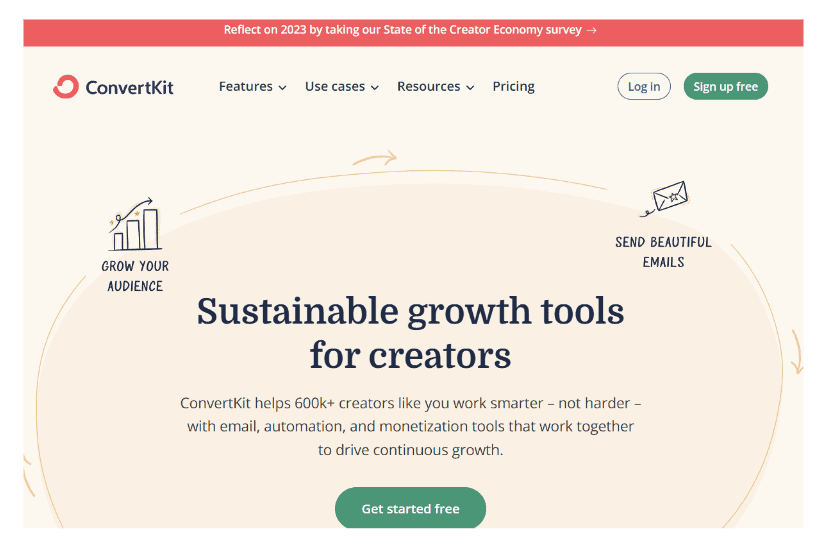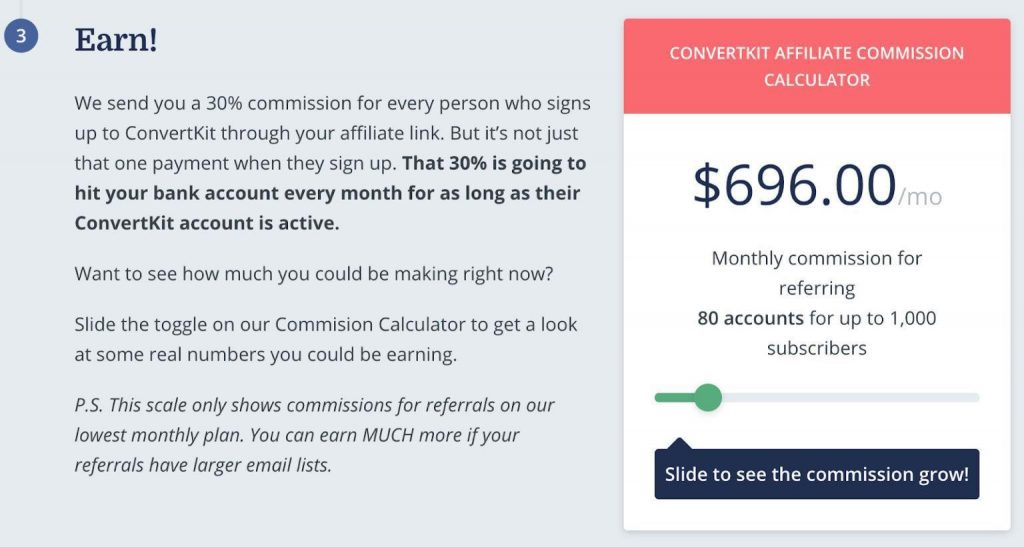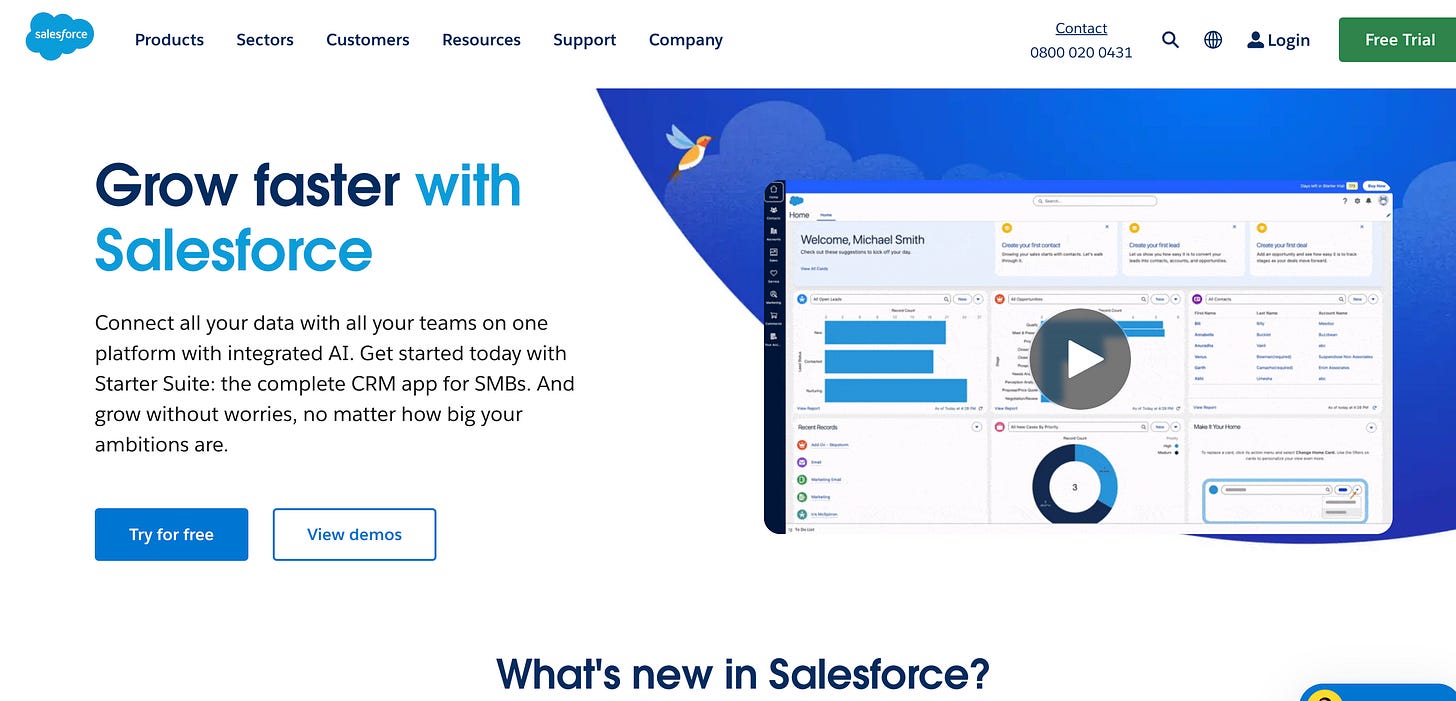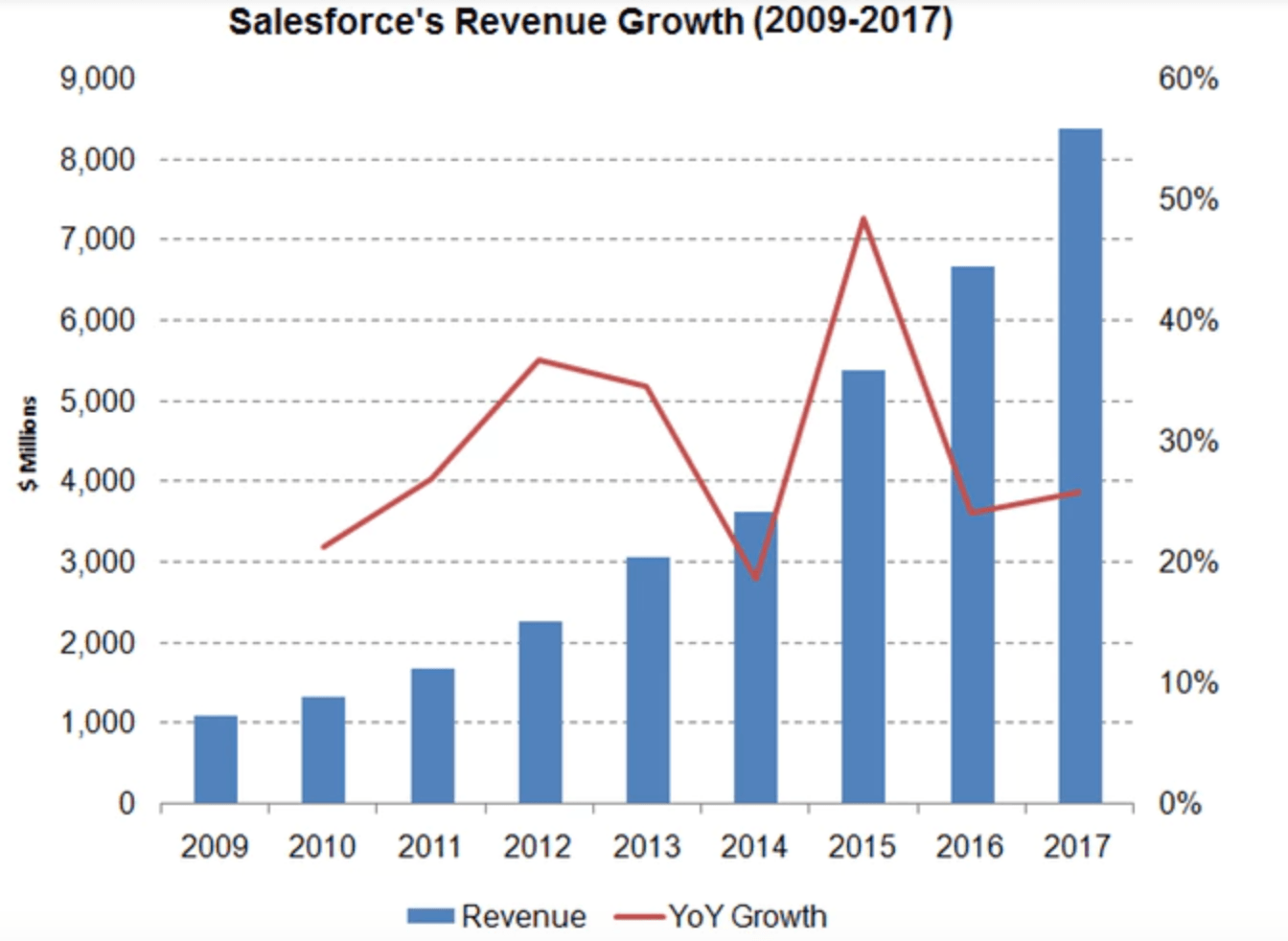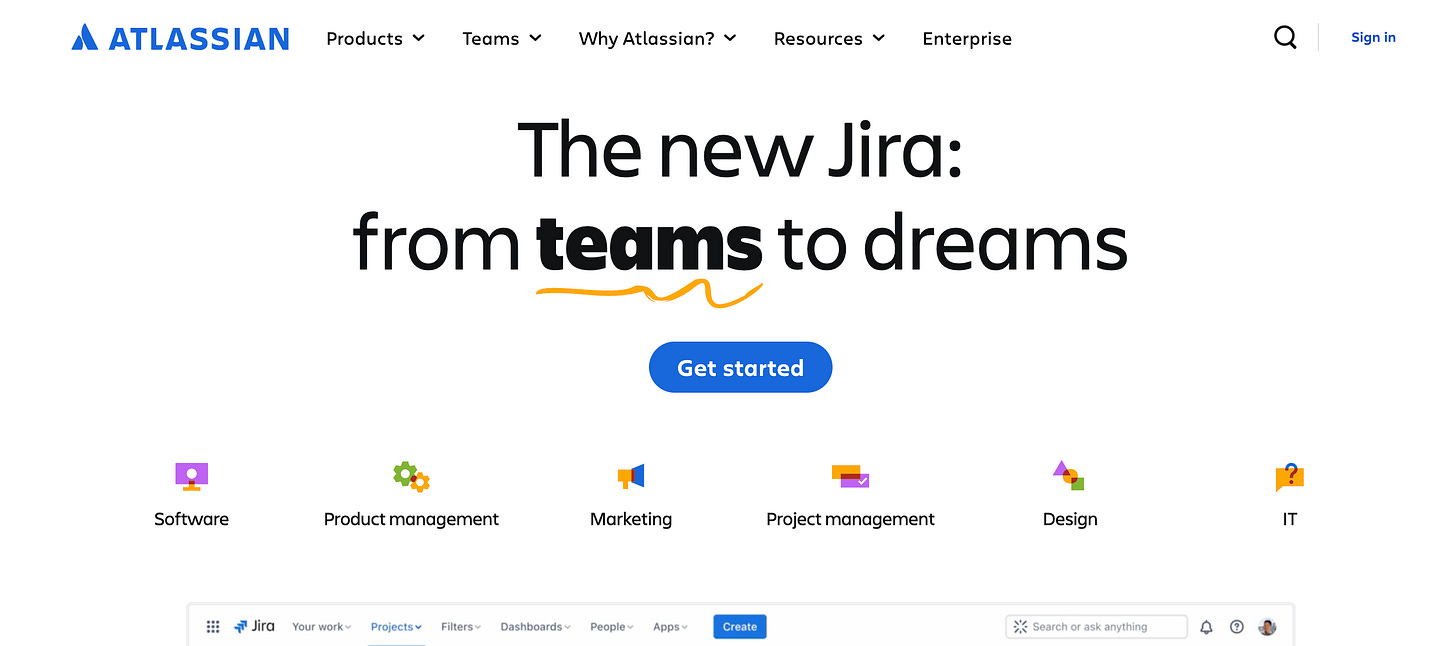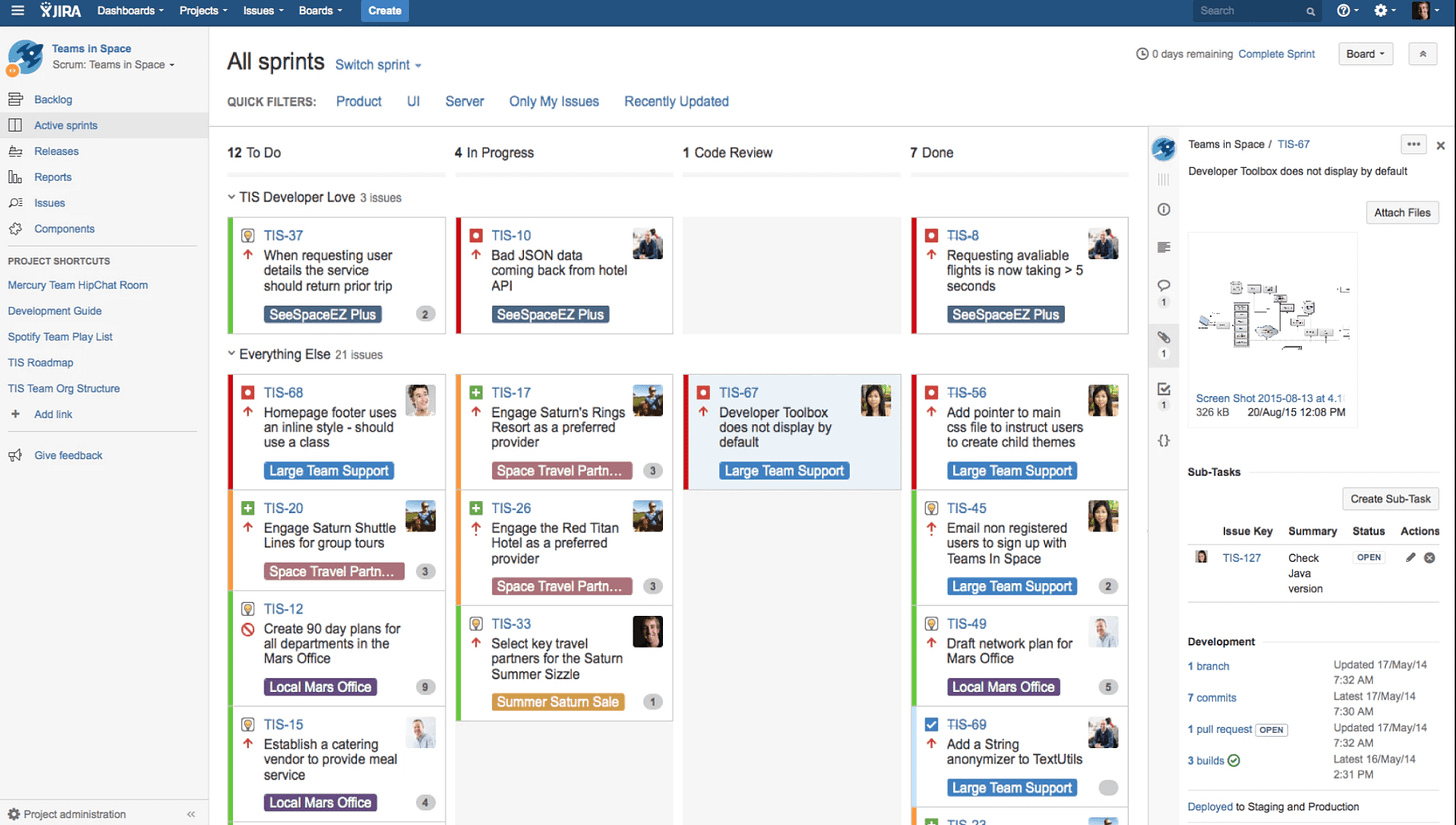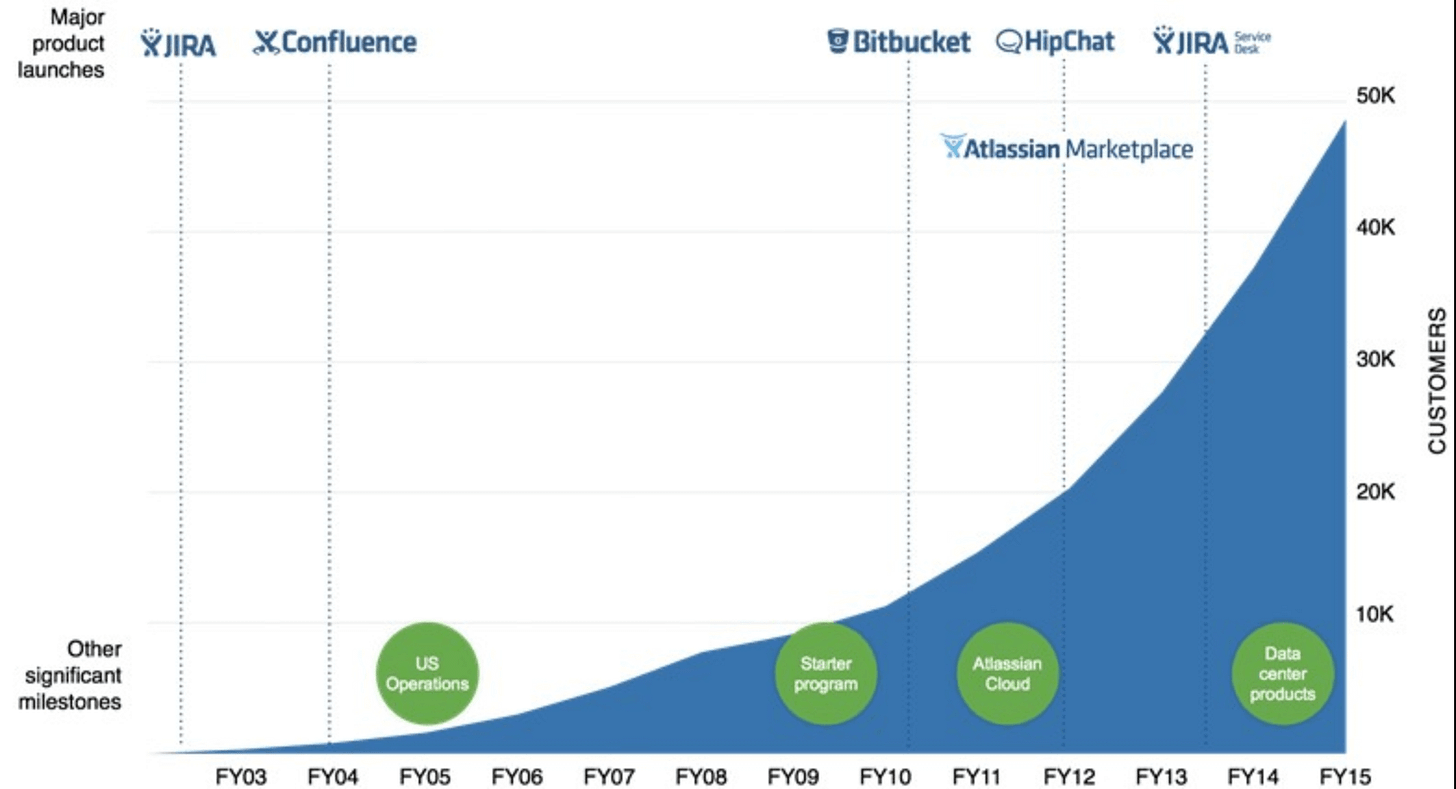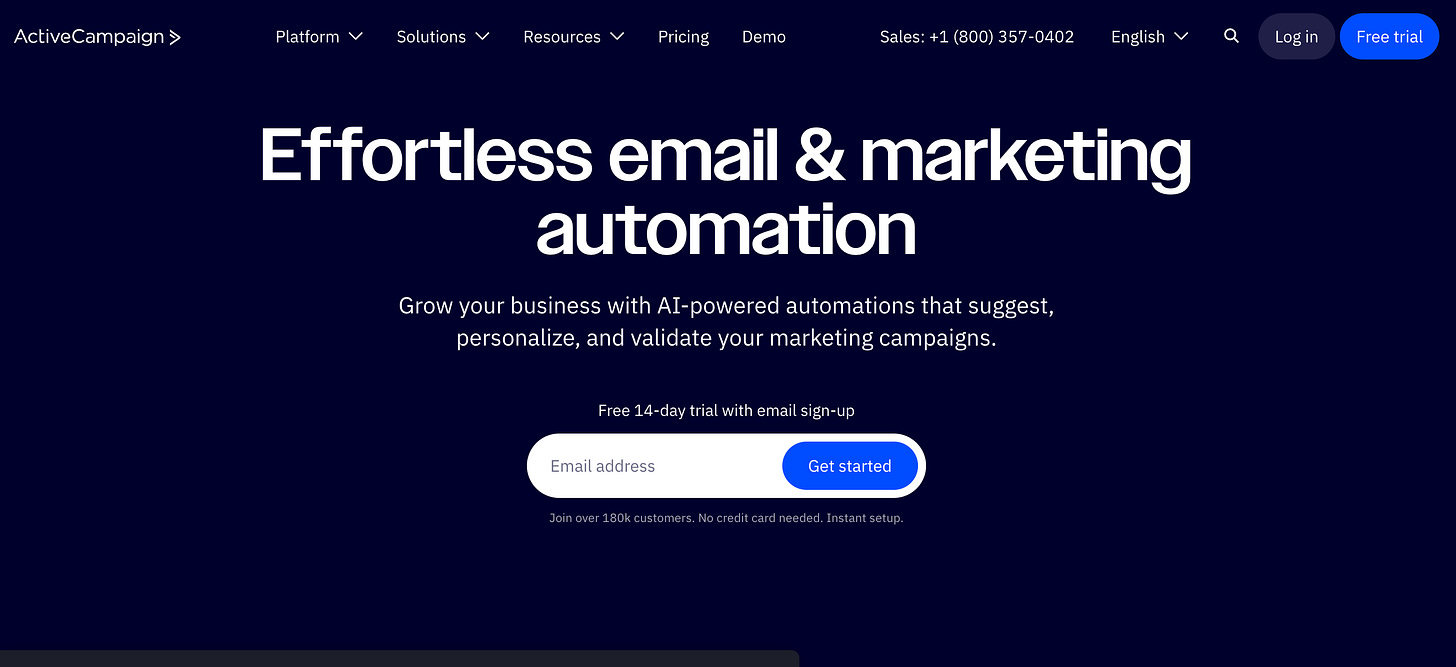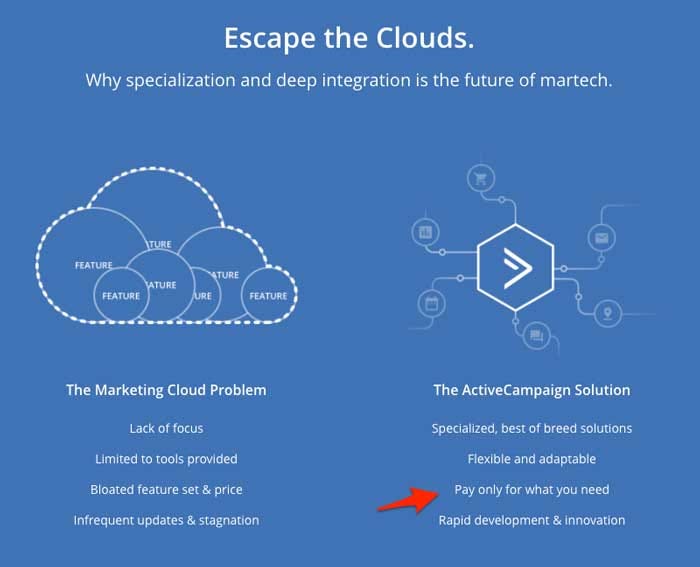⚡ +25 Growth Case Studies: Part 1/5 ⚡
This will be a series of case studies in the following months.
Hello reader, this is Alex - Head of Growth for early-stage startups and founder at Vidsell. I'm a big fan of helping others scale their companies and educate my peers in the best path possible, so here are a couple of free resources for you:
✅ Marketing and Growth SOPs for free!
✅ My stack collection of growth tools
Companies are striving to grow their business, but companies do not always achieve the success they want.
Fortunately, many case studies can help companies learn from other businesses’ successes and failures. I was able to dig up many of these case studies on growth hacking from specialists around the world.
Index
Convertkit
Kabbage
Salesforce
Atlassian
Active Campaign
👇👇 Let's go straight to these 5 success stories 👇👇
ConvertKit - Road to $1.7m MRR with Nathan Barry
ConvertKit (now Kit), an email marketing platform for creators, bootstrapped its way to $35 million in annual recurring revenue (ARR) through a series of strategic growth initiatives and by overcoming significant challenges. Founded by Nathan Barry in 2013, the company initially struggled with slow growth and low monthly recurring revenue (MRR). However, a pivotal decision to invest $50,000 of personal funds and hire a full-time developer in 2014 marked the beginning of ConvertKit's turnaround.
The company's growth accelerated in 2015 when they introduced free concierge migrations, eliminating a major barrier to adoption for potential users. This, combined with a strong focus on affiliate marketing partnerships and educational webinars, led to exponential growth. By 2016, ConvertKit's MRR had reached $625,000, and they continued to refine their product offerings specifically for creators and content-driven businesses.
Throughout their journey, ConvertKit faced and overcame several challenges, including early growth struggles, user adoption barriers, cash flow issues, and intense market competition. They maintained their focus on creators, resisting the temptation to broaden their market, which helped them differentiate from larger competitors. By 2023, ConvertKit had reached $36.4 million in ARR with 49,000 customers, solidifying their position as a go-to platform for creators.
🏆 What worked for ConvertKit 🏆
Offering free concierge migrations to reduce friction for new users
Implementing a strong affiliate marketing program with recurring commissions
Hosting numerous educational webinars to build trust and community
Maintaining a laser focus on creators and their specific needs
Introducing features like visual automations and ad monetization to empower users
😔 What didn't work (learning experiences) 😔
Initially spreading resources too thin by juggling multiple projects
Scaling too quickly without ensuring profitability, leading to cash flow struggles
Experiencing product glitches and limited customization options, causing some user churn
Struggling to compete with larger rivals on ad spend due to limited marketing budget
Do you need help with your startup in implementing GTM strategies that result in 300% more website traffic and conversions? Book a discovery call with me!
Kabbage - Growth Strategy of a Billion Dollar Fintech Startup (acquired by American Express)
Kabbage, a fintech startup founded in 2008, revolutionized small business lending by introducing a 100% automated application process. This innovative approach allowed them to grow rapidly, providing $4 billion in funding to over 100,000 small businesses in the US and achieving a valuation of $1.3 billion. Kabbage's success stems from their use of data science and analytics to process loan applications quickly, offering up to $250,000 in as little as 10 minutes.
The company's unique selling proposition lies in its ability to assess creditworthiness by analyzing data from various online financial and business services that borrowers connect to their application. This method not only streamlines the process for users but also allows Kabbage to maintain lower loss rates compared to traditional lenders. Their technology proved so effective that they began licensing it to other financial institutions through the Kabbage Platform.
Kabbage's marketing strategy primarily focused on digital channels, leveraging display advertising, Facebook ads, search engine marketing, and SEO. They tailored their messaging to specific customer segments and utilized retargeting to reach potential borrowers. The company also implemented email marketing campaigns, particularly for abandoned applications, and cultivated positive customer reviews to build credibility.
🏆 What worked for Kabbage 🏆
Developing a superior product with a simplified, automated lending process
Targeting a "starving crowd" of small businesses in need of quick financing
Implementing a comprehensive digital marketing strategy across multiple channels
Creating tailored messaging for specific customer segments (e.g., eBay merchants)
Utilizing data-driven credit assessment to lower loss rates and improve efficiency
😔 What didn't work (learning experiences) 😔
Missed opportunities in lead capture for website visitors who don't start applications
Limited engagement on social media content and YouTube videos
Underutilization of content marketing, lacking "10x content" for link building and social shares
Minimal investment in promoting creative campaigns, resulting in low social media engagement
Potential for improvement in SEO, particularly for high-volume keywords like "small business loans"
Salesforce - Scaling a CRM towards a $13 Billion Empire
Salesforce, founded in 1999 by Marc Benioff and a team of experienced consultants, revolutionized the software industry by introducing the concept of cloud-based customer relationship management (CRM) software. The company's vision was to deliver software as a service, accessible 24/7 over the internet, challenging the traditional on-premise software model dominated by giants like Oracle and SAP.
In its early years, Salesforce focused on creating a simple, user-friendly CRM product that was easy to set up and use. The company employed aggressive marketing tactics, including theatrical protests and themed parties, to gain attention and differentiate itself from competitors. Salesforce's innovative approach to software delivery, coupled with its free trial model and straightforward pricing, helped it achieve rapid growth and a successful IPO in 2004.
As the company matured, it expanded beyond its core CRM offering to become a platform-as-a-service provider. Salesforce launched AppExchange, Force.com, and other initiatives to nurture a growing ecosystem of third-party developers and applications. The company also made strategic acquisitions to broaden its product portfolio and compete with other enterprise software providers. In recent years, Salesforce has focused on incorporating cutting-edge technologies like artificial intelligence into its products while continuing to expand its suite of cloud services.
🏆 What worked for Salesforce 🏆
Introducing a revolutionary cloud-based software delivery model
Creating a simple, user-friendly CRM product that addressed customer pain points
Employing aggressive and attention-grabbing marketing tactics
Offering free trials and straightforward pricing to drive adoption
Building a platform and ecosystem for third-party developers (AppExchange, Force.com)
Making strategic acquisitions to expand product offerings and enter new markets
Continuously innovating and incorporating new technologies (e.g., AI with Salesforce Einstein)
😔 What didn't work (learning experiences) 😔
Some controversial marketing moves, such as the Dalai Lama invitation, which led to criticism
As the company grew, it left room for competitors to capture the SMB market, requiring later efforts to address this segment
Facing increased competition from both nimble startups and established players like Microsoft and Oracle as they moved to the cloud
The need to constantly innovate and expand product offerings to maintain market leadership, potentially leading to product sprawl
Atlassian - +$10 Billion Growth Engine in 20 years
Atlassian, founded in 2002 by Mike Cannon-Brookes and Scott Farquhar, began as a small startup in Sydney, Australia. The company's journey from a bootstrapped venture to a global software powerhouse is a remarkable tale of innovation, perseverance, and strategic decision-making.
Initially, Cannon-Brookes and Farquhar started Atlassian as a support company for other businesses' customer service teams. Frustrated with the available bug-tracking software, they developed their own solution, Jira, which became their flagship product. This pivot from a service-based model to a product-focused company set the stage for Atlassian's future success.
As Atlassian grew, it expanded its product lineup, launching Confluence in 2004 and continuously adding new tools to its portfolio. The company's approach to sales and marketing was unconventional, opting for a self-service purchase platform instead of a traditional sales team. This decision proved successful when they received their first major order from American Airlines without any direct sales pitch. Atlassian's growth continued steadily, leading to a successful IPO in 2015 and cementing its position as a leader in the software development and collaboration tools market.
🏆 What worked for Atlassian 🏆
Developing products to solve real problems they experienced firsthand
Adopting a self-service sales model, reducing overhead and enabling scalability
Continuously innovating and expanding their product portfolio (e.g., Jira, Confluence, Trello)
Maintaining a strong company culture with clearly defined values
Embracing remote work early, allowing for global talent acquisition
Focusing on creating user-friendly, affordable software for developers and teams
😔 What didn't work (learning experiences) 😔
Early attempt to establish a New York office, which they had to close due to overextension
Navigating the complexities of going public and meeting shareholder demands
Balancing rapid growth with maintaining company culture and values
Competing in an increasingly crowded market for collaboration and development tools
Adapting to changing work environments and customer needs, especially during global events like the COVID-19 pandemic
Active Campaign - +$10 Billion Growth Engine in 20 years
ActiveCampaign, founded in 2003 by Jason VandeBoom in Chicago, has grown from a small email marketing startup to a global leader in customer experience automation. The company's journey reflects its commitment to innovation and customer-centric solutions in the marketing automation space.
Initially focused on email marketing, ActiveCampaign expanded its offerings to include a comprehensive suite of tools for marketing automation, CRM, and sales automation. This evolution was driven by VandeBoom's vision to provide small and medium-sized businesses with affordable, user-friendly solutions to streamline their marketing efforts and compete with larger companies.
Over the years, ActiveCampaign has achieved significant growth, expanding its customer base to over 145,000 users across 170 countries. The company's success can be attributed to its focus on continuous innovation, including the integration of machine learning capabilities and predictive analytics to enhance personalization in marketing campaigns.
🏆 What worked for ActiveCampaign 🏆
Developing a user-friendly, comprehensive platform that caters to small and medium-sized businesses
Continuously expanding and improving their product offerings to meet evolving market needs
Focusing on customer success and providing excellent support
Embracing innovation, including the integration of AI and machine learning technologies
Maintaining a strong company culture with a commitment to diversity and inclusion
Adopting a global approach, serving customers in over 170 countries
😔 What didn't work (learning experiences) 😔
Navigating rapid growth while maintaining product quality and customer satisfaction
Competing in an increasingly crowded market for marketing automation tools
Balancing the needs of a diverse customer base ranging from small businesses to larger enterprises
Adapting to changing privacy regulations and data protection requirements
Managing the transition from a small startup to a global company with over 800 employees
Conclusion
Uff… pretty long right? 😫
Thank you for reaching here and reading the full article.
There are indeed a lot of use cases that you can learn from but essentially, for you to keep a sustainable growth, focus on solving the real problems for your audience and you'll see sustainable growth.
This is how I can help you grow your B2B brand from pre-seed to series A
Connect with me on LinkedIn and Twitter so you can get more free content on all things B2B and GTM.
Book a 1-on-1 free discovery call (only for founders - no sales pitch please)
Download +200 free templates for marketing, growth and sales
Check my own AI personalized video SaaS > Vidsell.ai — send me a direct message if you signed up by reading this Substack article - I'll give you a promo code ! 😄
Leave a comment below with your website URL, I'll give you back a growth hack 👇




